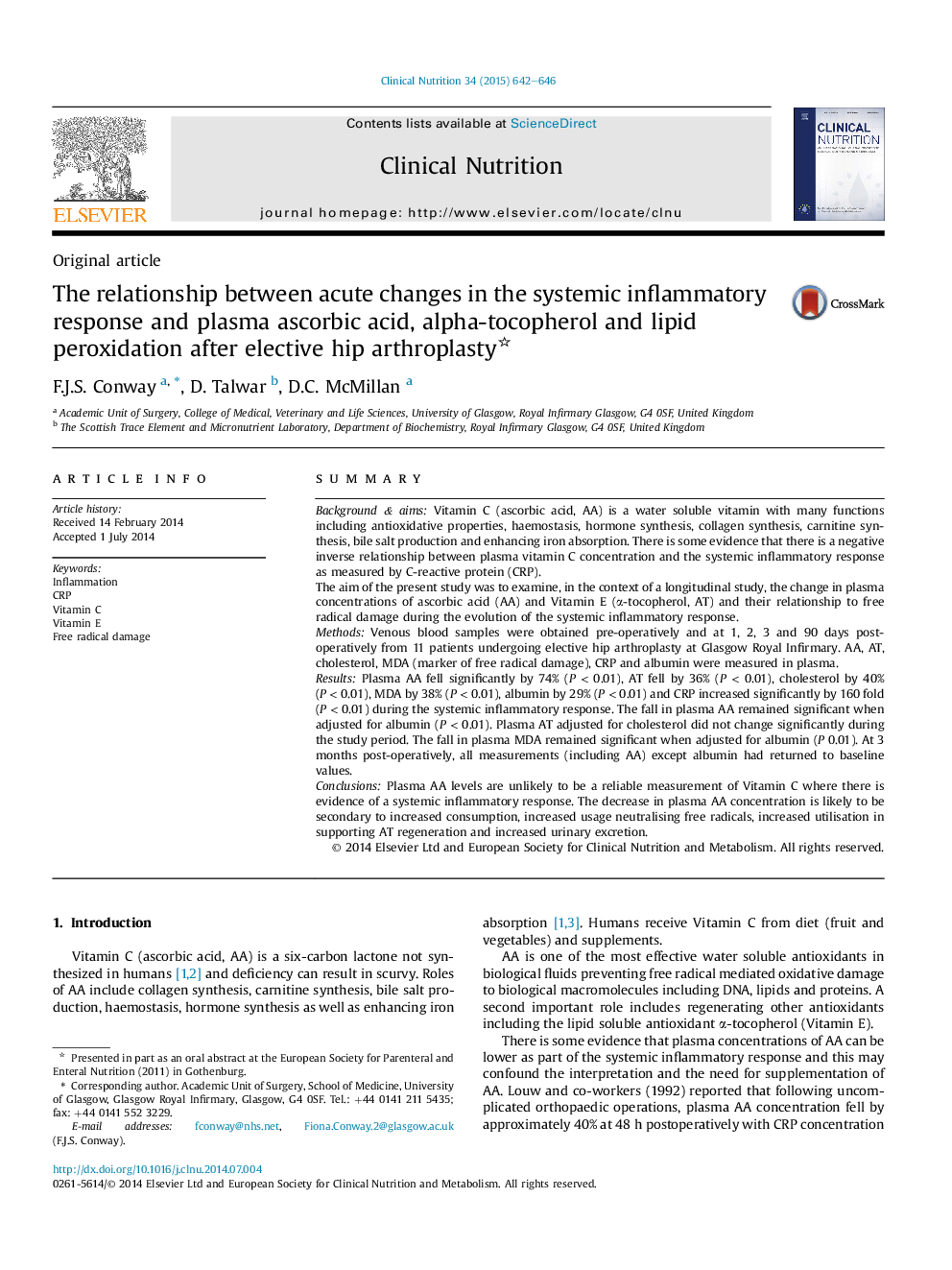| کد مقاله | کد نشریه | سال انتشار | مقاله انگلیسی | نسخه تمام متن |
|---|---|---|---|---|
| 5872278 | 1143076 | 2015 | 5 صفحه PDF | دانلود رایگان |
SummaryBackground & aimsVitamin C (ascorbic acid, AA) is a water soluble vitamin with many functions including antioxidative properties, haemostasis, hormone synthesis, collagen synthesis, carnitine synthesis, bile salt production and enhancing iron absorption. There is some evidence that there is a negative inverse relationship between plasma vitamin C concentration and the systemic inflammatory response as measured by C-reactive protein (CRP).The aim of the present study was to examine, in the context of a longitudinal study, the change in plasma concentrations of ascorbic acid (AA) and Vitamin E (α-tocopherol, AT) and their relationship to free radical damage during the evolution of the systemic inflammatory response.MethodsVenous blood samples were obtained pre-operatively and at 1, 2, 3 and 90 days post-operatively from 11 patients undergoing elective hip arthroplasty at Glasgow Royal Infirmary. AA, AT, cholesterol, MDA (marker of free radical damage), CRP and albumin were measured in plasma.ResultsPlasma AA fell significantly by 74% (P < 0.01), AT fell by 36% (P < 0.01), cholesterol by 40% (P < 0.01), MDA by 38% (P < 0.01), albumin by 29% (P < 0.01) and CRP increased significantly by 160 fold (P < 0.01) during the systemic inflammatory response. The fall in plasma AA remained significant when adjusted for albumin (P < 0.01). Plasma AT adjusted for cholesterol did not change significantly during the study period. The fall in plasma MDA remained significant when adjusted for albumin (P 0.01). At 3 months post-operatively, all measurements (including AA) except albumin had returned to baseline values.ConclusionsPlasma AA levels are unlikely to be a reliable measurement of Vitamin C where there is evidence of a systemic inflammatory response. The decrease in plasma AA concentration is likely to be secondary to increased consumption, increased usage neutralising free radicals, increased utilisation in supporting AT regeneration and increased urinary excretion.
Journal: Clinical Nutrition - Volume 34, Issue 4, August 2015, Pages 642-646
